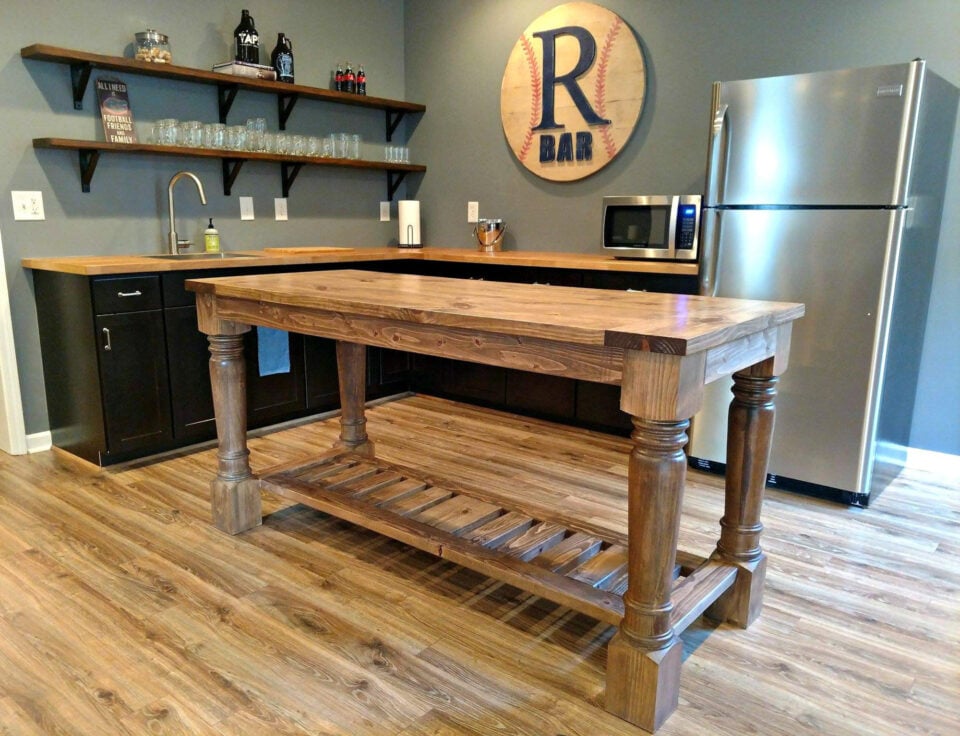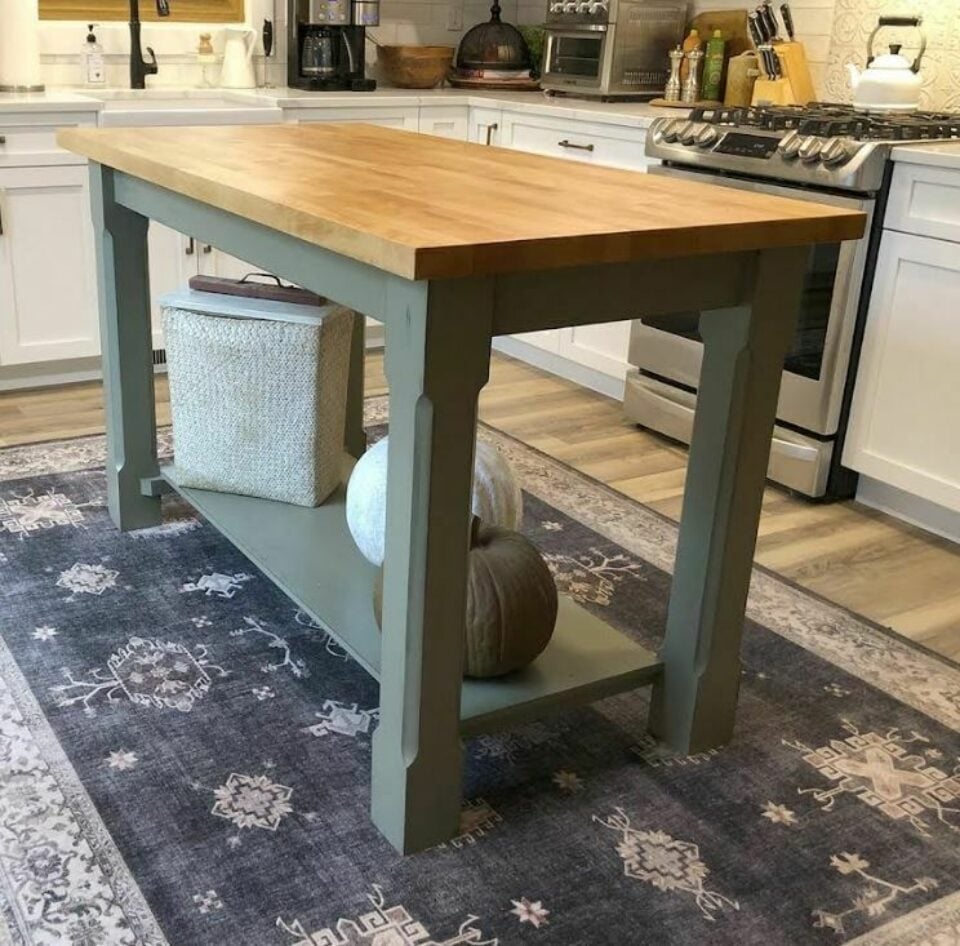Upgrade Your Kitchen with Classy Kitchen Island Leg Solutions
Upgrade Your Kitchen with Classy Kitchen Island Leg Solutions
Blog Article
The Relevance of a Sturdy Kitchen Island Leg in Developing a Practical Food Preparation Location
A strong kitchen island leg functions as a basic part in establishing a functional food preparation setting, offering essential support for both the kitchen counter and different cooking area activities. The security it offers can substantially lower the danger of mishaps in high-traffic locations, while also adding to the overall aesthetic comprehensibility of the space. As kitchen areas advance into multifunctional locations for food preparation, eating, and socializing, the selection of materials and design considerations for island legs becomes progressively important. Comprehending these aspects can change your cooking area right into a more secure and more efficient area, prompting further exploration into the most effective choices offered.
Benefits of Sturdy Island Legs
Providing important assistance, strong kitchen island legs play a pivotal duty in improving the capability and durability of cooking area islands - kitchen island leg. These legs not only birth the weight of the countertop and any kind of extra items positioned on the island, however also add to the overall security of the structure. A well-supported cooking area island guarantees that it remains functional and upright, also under heavy usage, which is particularly vital in hectic kitchen settings
In addition, durable island legs can enhance the visual allure of the cooking area. They offer a solid structure that can match various layout styles, from contemporary to traditional. This flexibility permits property owners to customize their kitchen area islands according to personal taste while guaranteeing that the structural stability stays uncompromised.
In enhancement to their helpful duty, durable cooking area island legs can also improve safety. Inevitably, spending in strong kitchen area island legs is important for a useful and visually pleasing cooking area.
Materials for Kitchen Area Island Legs
When picking products for kitchen island legs, resilience and visual allure are crucial factors to take into consideration,. One of the most usual materials include wood, metal, and crafted wood, each offering unique benefits.
Wood, such as cherry, oak, or maple, is a traditional selection due to its stamina and ageless charm (kitchen island leg). It can stand up to substantial weight and is immune to use, making it excellent for high-use cooking area settings. In addition, wood can be discolored or repainted to match various cooking area designs
Steel legs, commonly crafted from stainless steel or wrought iron, offer a industrial and contemporary appearance. They are incredibly strong and can sustain significant loads while being immune to moisture and heat, which is helpful in a cooking location. Metal legs can also be conveniently cleaned up, boosting their functionality.

Design Factors To Consider for Security
The selection of materials for cooking area island legs straight influences the layout reference factors to consider for stability. read review When making a kitchen area island, it is extremely important to assess the weight-bearing capacity of the picked materials. Heavier products, such as strong timber or steel, usually supply greater stability, especially under the stress of daily use.
In addition, the leg layout need to include appropriate geometry to boost security. A wider base raises the assistance location, decreasing the threat of wobbling or tipping. Consideration needs to likewise be offered to the elevation of the legs; disproportionate leg sizes can cause discrepancy, jeopardizing the general security of the island.
Moreover, the circulation of weight throughout the island is critical. Ensuring that the leg positioning straightens with the heaviest elements, such as kitchen counters and appliances, will certainly further improve security.
Upkeep Tips for Durability

Depending on the product of the legs-- whether wood, metal, or composite-- suitable cleaning techniques need to be used. Metal legs may require a light polish to stop corrosion and keep their gloss.
Additionally, tightening screws and bolts frequently can make sure security and view publisher site protect against tottering. If the kitchen island experiences heavy usage, consider reinforcing the legs with added braces or sustains to boost durability. Finally, applying a protective finish or sealer can secure against wetness and stains, prolonging the lifespan of the legs. By adhering to these upkeep ideas, property owners can ensure their kitchen island legs continue to be functional and durable for many years to come.
Picking the Right Leg Design
Normal maintenance guarantees that cooking area island legs continue to be functional and strong, but selecting the right leg design is equally essential for both aesthetic appeals and support. The option of leg style can substantially affect the general style and harmony of your kitchen.

Functionality is another important aspect. For instance, thicker legs or those with a tough base can support much heavier kitchen counters and equipment, improving the island's energy. On the other hand, slim legs might produce an airy appearance, appropriate for lighter styles however potentially less supportive.
Conclusion
In summary, the importance of durable kitchen area island legs can not be overstated in the development of a practical cooking area. These legs provide important support, boost security, and add to the general aesthetic of the kitchen. By thoroughly selecting appropriate products and layouts, in addition to carrying out appropriate maintenance practices, the longevity and performance of cooking area islands can be made certain. Eventually, buying robust island legs is essential to accomplishing a safe and efficient culinary setting.
A durable kitchen island leg offers as a fundamental part in establishing a useful cooking setting, offering necessary support for both the countertop and different kitchen tasks.Providing crucial support, sturdy cooking area island legs play a critical duty in improving the functionality and sturdiness of kitchen islands. Inevitably, investing in tough kitchen area island legs is essential for a practical and visually pleasing cooking area.
Factor to consider ought to additionally be given to the elevation of the legs; disproportionate leg sizes can lead to inequality, jeopardizing the total stability of the island.
Wooden legs supply heat and a classic appearance, while steel legs offer a industrial and modern feel.
Report this page